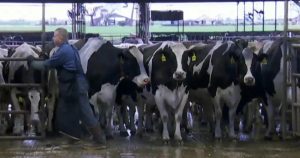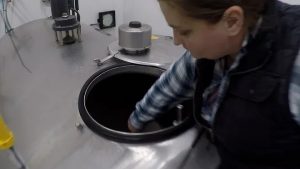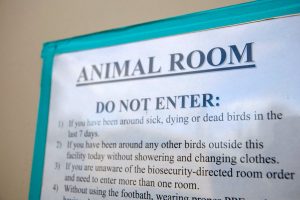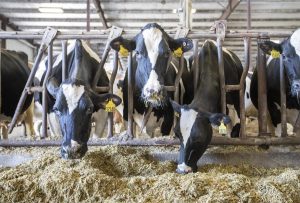
All Cache County dairy facilities will begin collecting mandatory weekly samples to be tested for bird flu, according to a press release sent Wednesday, in an effort to curb the spread of the highly contagious disease.
The outbreak was first detected in Texas dairy cattle in March, and has since spread to 14 other states, according to Caroline Hargraves, a spokeswoman for the Utah Department of Agriculture and Food.
In total, 334 cases have been confirmed in cattle, department data shows, while in the last 30 days the bird flu has been detected in two Idaho herds and 99 in California, with the most recent detection occurring Oct. 17. So far there have been no detected cases in Utah dairy cattle.
“UDAF inspectors will collect bulk tank samples weekly from all Cache County dairy facilities,” the release says, and “in the event of a positive test, the dairy will be placed under a quarantine and no movement of lactating cattle will be permitted on or off the facility with the exception of cows going direct to slaughter.”
The bird flu, which is fatal to poultry, is “often transmitted by wild birds to domestic poultry,” the release says.
Through genetic sequencing, Hargraves said they have confirmed that the recent detection of bird flu in a flock of 1.8 million chickens in Cache County is the same virus spreading among dairy cattle.
In the last 30 days, bird flu outbreaks have been confirmed in three commercial poultry flocks across as many states — Utah, California and Washington — according to Utah Department of Agriculture and Food data. Two backyard flocks had confirmed cases in Idaho as well.
Hargraves says the recent detections “do not present an immediate public health concern”; there have been no confirmed cases among humans in Utah, and in other states, only mild illnesses have been reported among livestock workers.
Health officials are urging farmers to stay vigilant looking for signs of the disease in their animals. “Poultry symptoms include high death loss among flocks, nasal discharge, decreased appetite or water consumption, and lack of coordination in birds. Dairy cattle symptoms include decreased milk production; thicker, colostrum-like milk; decrease in feed consumption; dehydration; and fever. Most dairy cattle recover within a few weeks,” the release says.
“At present, no major impacts to the food supply chain are anticipated,” according to Hargraves.
The testing will come at no cost to the dairies, with federal funding covering “testing, veterinary expenses, personal protective equipment, milk disposal, and milk losses,” the release says. Producers outside Cache County also have the ability to participate in voluntary surveillance.
You can now read the most important #news on #eDairyNews #Whatsapp channels!!!
🇺🇸 eDairy News INGLÊS: https://whatsapp.com/channel/0029VaKsjzGDTkJyIN6hcP1K

























